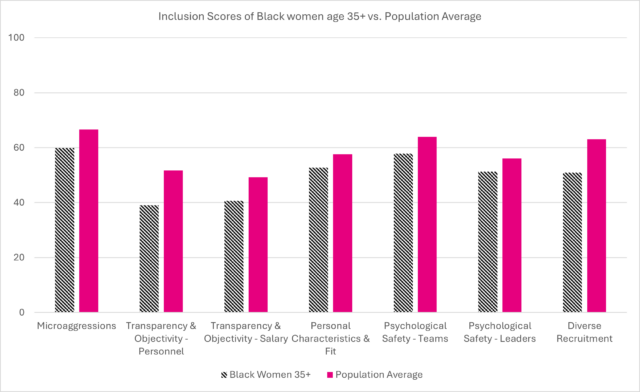It’s still Black History Month in the US, and it’s still important
This past weekend, I went to my local grocery store like I do most weekends. As I was walking to my car in the parking lot, I heard someone shout, “Go back home! We don’t want you, and we don’t need you!”
I looked up and realized the man was directing this at me. So I smiled, turned around, and kept walking.
I smiled because… what else could I do? While I live in a relatively diverse, cosmopolitan, liberal city in the US where overt comments like this aren’t the norm, I also live in a state with a 45% gun ownership rate. Confronting racism in my day-to-day life is often not a safe choice.
If you’re a person of colour in living in the US, this is likely a familiar experience for you. If you’re Black and living in the US, this is probably something you were taught as a child to expect to hear at some point. And you were taught how to behave to avoid any escalation of the situation.
This is the reality of life in America. This is why it’s so important to recognise and celebrate Black History Month, even if the federal government has decided not to anymore.
This is an opportunity for organisations, and leaders, to step up.
How does racism manifest in the workplace, and what are the effects?
Most racism that Black folks face isn’t overt comments like the one I experienced last week. Most of it comes in the form of unconscious hiring discrimination, inequitable pay and promotion decisions, and microaggressions.
It’s even worse for Black women in the US. Our own research has shown that across 7 different aspects of inclusion in the workplace, Black women – particularly those over 35 – are less included at work. They experience more microaggressions, less psychological safety, and have less transparency in decision-making.

This lack of inclusion, this inequity, this discrimination is obviously morally reprehensible. But it’s also bad for business. The discrimination that Black workers face has cost US businesses and the economy an estimated $51 Trillion since 1990.
And yet, the US government is rolling back protections of Black employees by terminating Diversity, Equity, & Inclusion programmes and punishing companies that are trying to prevent discrimination, revoking anti-discrimination regulations that have existed since 1965, and urging their agencies to not even acknowledge the contributions of Martin Luther King, Jr (among others).
What can organisations do?
The government rollbacks in protections against discrimination provides organisations a key opportunity to show their support for marginalised employees. We’ve known for years that the inclusion of a more diverse workforce leads to all sorts of gains, including fewer workplace accidents, improved teamwork and collaboration, better task performance, increased innovation, and higher productivity.
Here are 4 ways your organisation can realise these gains:
- Understand – where the barriers and opportunities are within your firm. Move beyond just collecting demographic information by collecting both inclusion AND equity data, and look at what the data tells you. Without it, you risk implementing interventions that don’t actually get to the heart of the issues in your organisation, making your Diversity, Equity, & Inclusion work less effective, less efficient, and less sustainable. Further, at this time, it is important to listen to your colleagues, facilitate dialogue to encourage ongoing learning to challenge and reposition thinking; and accountability with campaigns to promote understanding.
- Identify and address systemic inequities – review your policies and procedures with an inclusion lens. We all have biases individually, but they’re much less likely to come into play when our policies and procedures account for them. If our policies and practice don’t mitigate our biases, they can have significant effects on our organisations, particularly when it comes to talent management. The stark number of organisations that have bias baked into their performance management processes, for example, is exceptionally high.
- Shine a light – Map out inclusive talent pathways for your organisation. By highlighting how minoritised individuals have attained leadership positions in your firm, you show your employees that there really is a progression pathway. This should include sharing their full career paths, the barriers they faced at different stages, and how they overcame those barriers
- Reposition EDI as strategic imperative – have an evidence-based strategy that is embedded across the business and people strategy, with inclusion as a core value; and accountability and measures across all levels. And just as you would for any other strategic priority – examine what works and what isn’t – and make adjustments accordingly.
There are obviously many more actions that organisations can and should take, but the best way to show support for your Black colleagues – and all colleagues from marginalised groups – is to take real steps toward improved equity and inclusion.
At Included, we specialise in actionable insights that drive organisational change. Contact us to learn how we can partner with your leadership team to create a more equitable future for all employees.
~ Raafi-Karim Alidina



